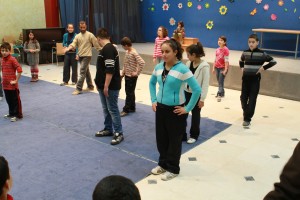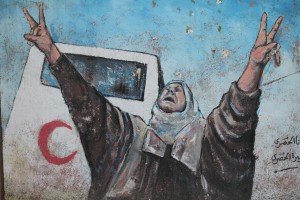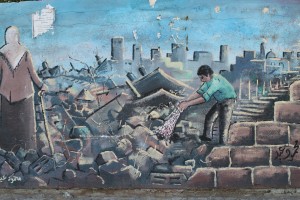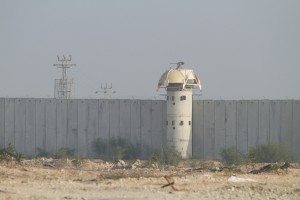Washington medical delegation finds hope amid the despair in Gaza
(This is Part 9 in a series. Gerri Haynes, a former president of Washington Physicians for Social Responsibility, has been sending back reports from inside blockaded Gaza. As she did twice before, Gerri organized a team of doctors and other health care providers to work in hospitals and clinics in Gaza in an effort to directly help the people there and to bring attention to the ongoing humanitarian crisis that the Israeli blockade has created.)

This center provides free access to books, art classes, music, dance, computers and study spaces for local children. (Bob Haynes photo)
As I pause to reflect on this visit, I know that the surgeons and cardiologist have seen scores of patients. The urologists have helped many children with complex surgical needs. Steve Gilbert has taught and discussed with hundreds of scientists – water, air and soil as polluted elements of the environment being their focus. The situation is grim.
I have talked with and counseled many women this visit – women whose desire it is to raise healthy, happy, secure children. Education is a primary value here. Schools are desperately overcrowded and children who are double-shifted go home to do their homework for three hours, then spend four or five hours with one or both parents – extending their learning.
Still, as the threat of attack is constant and the reality of extreme pollution is inescapable, the women I have talked with despair over the future for their children. The high unemployment rate means frustration and humiliation for men who cannot provide economic security for their families.
Turmoil in families is familiar and carries deep sorrow. The prospect of no resolution of the conflict between Israel and Palestine and of the internal Palestinian conflict means a future that stretches bleakly into an uncertain time.Young, bright Gazans express hope that the conflicts will end in a positive way when new leadership comes to power – the mothers I talked with only shake their heads and say, “God willing.”
One spectacularly bright light in Gaza is the Qattan Center for the Child. Funded by Mr. Qattan, a wealthy gentleman from the Gulf, the Center provides free access to books, art classes, music, dance, computers, study spaces and community for local children. Reem Abu Jaber, director of the Center, says she was born for this joyful work in an oasis of hope.
We have bid farewell to many friends in Gaza. The hardworking team of Amani, Marwan and Ashraf from Gaza Community Mental Health Programme has once again organized our days and made certain we were able to work as efficiently as possible.
It is late at night in Gaza. Dr. Ismail Zamilpa and Johanna Longacre, operating room nurse, are still in surgery.
UPDATE:Monday evening, Bethlehem
It took only two and one half hours to pass our delegation through the Erez Crossing from this morning.
There were some questions, but we were greeted by an official of the crossing who told us they want to make the crossing more open. He would like to see more commerce and workers passing through the checkpoint and says that they have opened the crossing at all hours to assist people coming from Gaza who have medical needs, even on Fridays.
We asked him about the reason more patients aren’t allowed to pass to the West Bank for care and he told us that government of Gaza denies people permits to pass from Gaza, often until they are near death. The differences in reasons for delays vary with each person who speaks of them, but everyone agrees that the borders create enormous difficulties for the Palestinians who live in Gaza.
We stopped for lunch with an old friend in Jerusalem, Hillel Schenker, co-editor of the Palestine/Israel Journal. Hillel spoke of continuing hope for peace and told of several peace initiatives and groups that are working to resolve the impediments to peace.
In Bethlehem, we toured the Rehabilitation Hospital, a beautiful facility that provides surgical care and rehabilitation to people from the West Bank and Gaza.The hospital’s medical director and told of expanded services and excellent care. We stood on the roof of the hospital and viewed the Separation Wall as it is being constructed close to the hospital, bisecting the Beit Jala area near Bethlehem from the open lands once included in this area – lands containing Palestinian olive groves and agricultural areas that will be inaccessible to the owners of the land.
We spent this evening in the offices of Wi’am, the Palestinian Conflict Resolution Center. We were treated to a homemade Palestinian dinner and listened to Yahav, a representative of the Israeli Center Against Housing Demolitions as he briefed us on the history of conflict here and spoke of possible resolutions. This is the organization headed by our friend, Zoughbi Zoughbi, and we heard of some of the excellent work the staff of Wi’am is doing in conflict resolution, women empowerment, child support and community negotiations.
The hopes for peace are strong.
RSS feed for comments on this post. TrackBack URI


